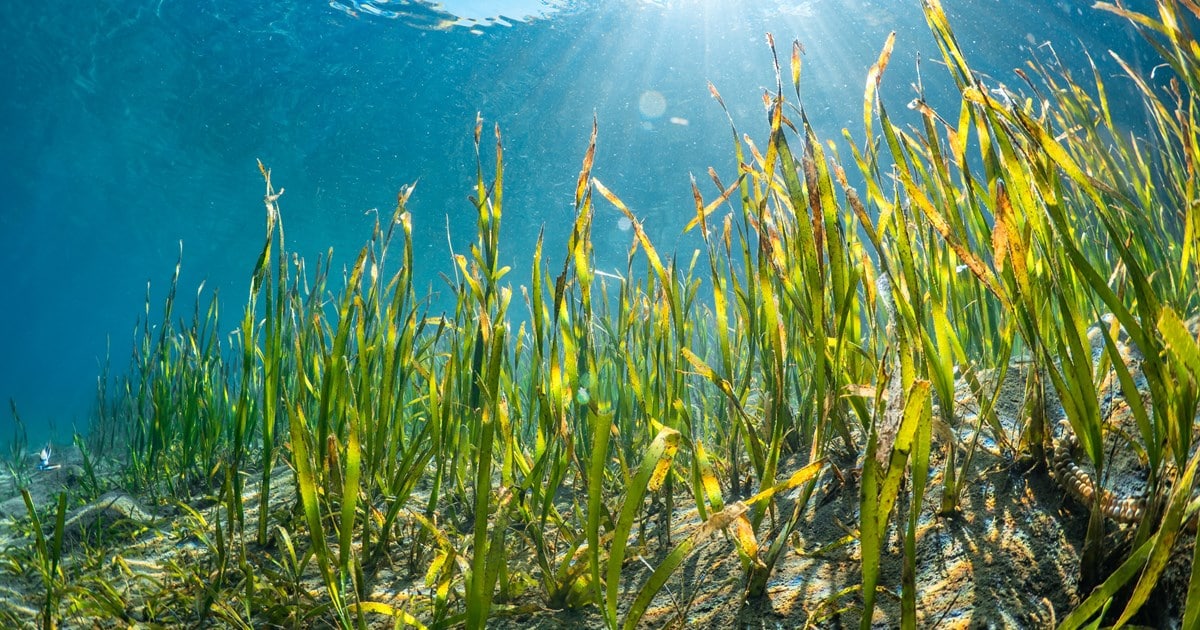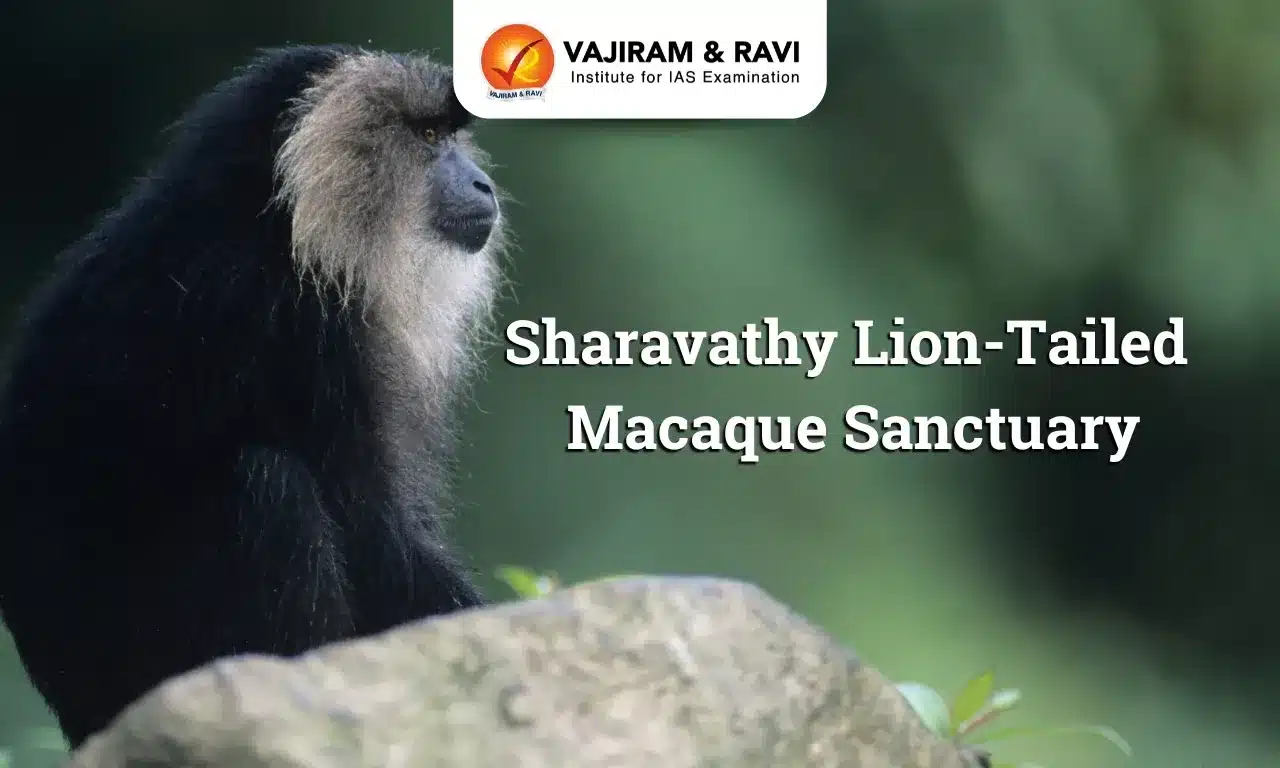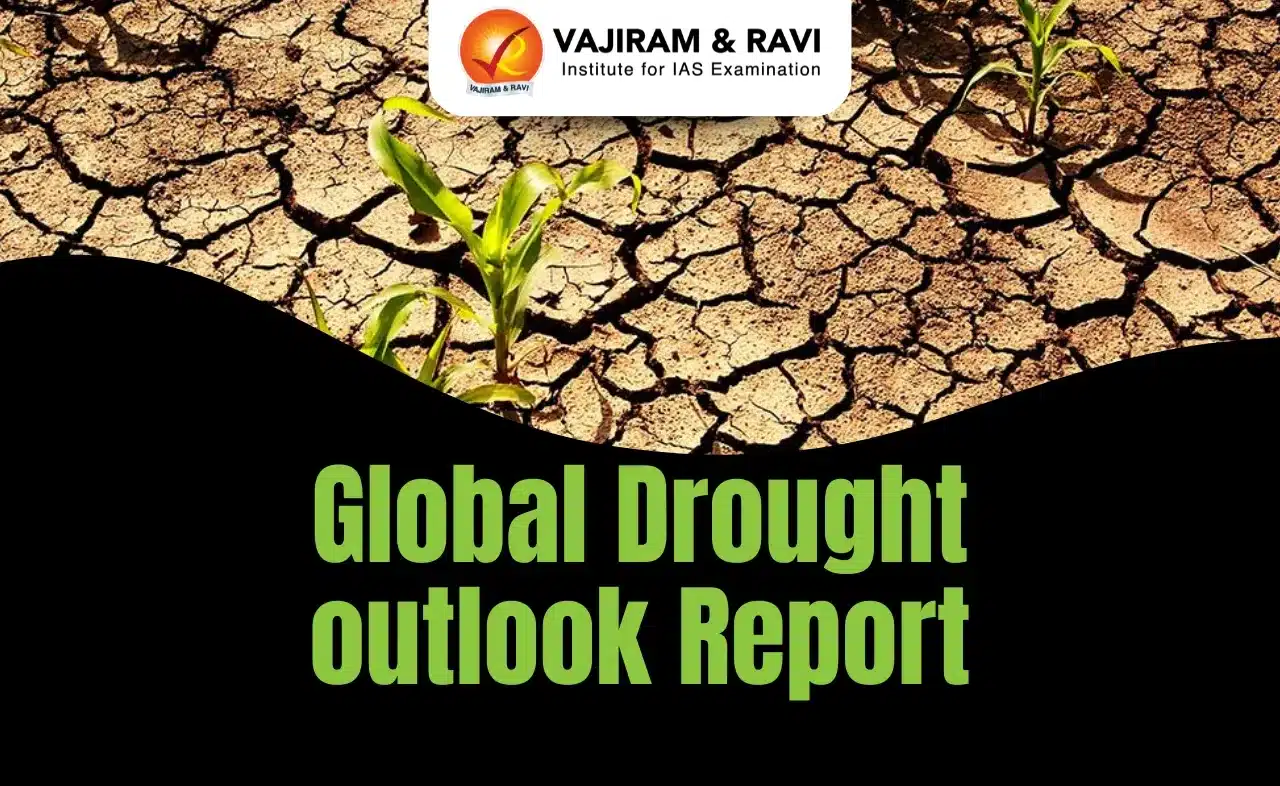Seagrass Latest News
According to recent study, seagrass has been declining at a rate of 1-2 per cent per year for the past century and nearly 5 percent of species are now endangered.
About Seagrass
- It is a flowering plant that grows submerged in shallow marine waters like bays and lagoons.
- They are so-named because most species have long green, grass-like leaves.
- Characteristics of Seagrass
- Seagrasses have roots, stems, and leaves and produce flowers and seeds.
- Like terrestrial plants, seagrass also photosynthesizes and manufactures their own food and releases oxygen.
- They evolved around 100 million years ago, and there are approximately 72 different seagrass species that belong to four major groups.
Distribution of Seagrass
- They are found on all continents except Antarctica.
- The tropical waters of the Indo-Pacific hold the highest diversity of seagrasses in the world.
- India too has vast seagrass meadows, home to 16 species of seagrass with major concentrations in the Gulf of Mannar, Palk Bay, Andaman and Nicobar Islands, Lakshadweep Islands and the Gulf of Kutch.
Advantages of Seagrass
- They are better than trees for capturing carbon and providing food for millions of people. Beyond supporting marine life, seagrass also acts as a natural barrier, protecting coastal communities from storms and erosion.
- These underwater plants can store carbon up to 35 times faster than tropical rainforests, locking it away for thousands of years.
- Threats: Pollution from cities, industries, and agriculture continues to degrade these meadows, while coastal development and tourism put additional pressure on fragile habitats of Seagrass.
Seagrass FAQs
Q1: What is sea grass used for?
Ans: Seagrasses support commercial fisheries and biodiversity, clean the surrounding water and help take carbon dioxide out of the atmosphere
Q2: What is the significance of sea grass?
Ans: Seagrasses provide shelter and food to an incredibly diverse community of animals, from tiny invertebrates to large fish, crabs, turtles, marine mammals and birds.
Source: DTH
Last updated on June, 2025
→ UPSC Notification 2025 was released on 22nd January 2025.
→ UPSC Prelims Result 2025 is out now for the CSE held on 25 May 2025.
→ UPSC Prelims Question Paper 2025 and Unofficial Prelims Answer Key 2025 are available now.
→ UPSC Calendar 2026 is released on 15th May, 2025.
→ The UPSC Vacancy 2025 were released 1129, out of which 979 were for UPSC CSE and remaining 150 are for UPSC IFoS.
→ UPSC Mains 2025 will be conducted on 22nd August 2025.
→ UPSC Prelims 2026 will be conducted on 24th May, 2026 & UPSC Mains 2026 will be conducted on 21st August 2026.
→ The UPSC Selection Process is of 3 stages-Prelims, Mains and Interview.
→ UPSC Result 2024 is released with latest UPSC Marksheet 2024. Check Now!
→ UPSC Toppers List 2024 is released now. Shakti Dubey is UPSC AIR 1 2024 Topper.
→ Also check Best IAS Coaching in Delhi
























